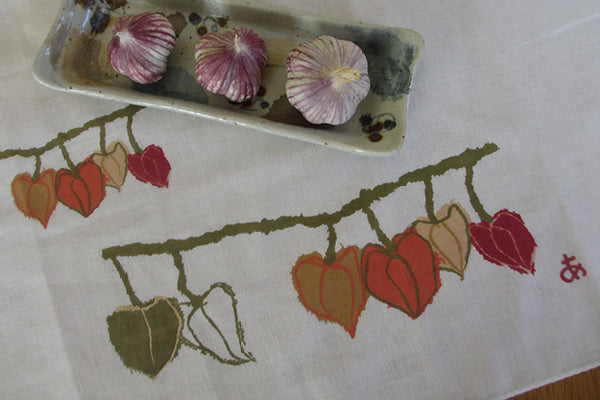By Patricia Belyea
SEATTLE WA I learned about Ayako Miyawaki (1905-1995) from an exhibition catalog of her textile art printed in 1988. The catalog introduction states: In 1945, at the age of 40, she began in an outburst of spontaneity and vitality to produce applique works out of rags, a material which she found in her everyday life.
Ayako herself writes: World War II ended on August 15, 1945. On that day, when tears streamed ceaselessly down my cheek, I realized that from now on I would be able to freely use the time which I had spent in vain going in and out of the bomb shelter on many hard and unbearable days during wartime.
She mentioned her husband, who was a teacher, spent most of his free time painting: During vacation time, he had a notice saying "No visitors allowed" at the door of his studio.
At the end of the war, applique work was popular in Japan but generally made using patterns or copying designs from books. Ayako shares: Different from that, the way in which I began to produce my applique work was to create my own designs after natural objects I observed. It forced me to invent my own designs and methods. This was a source of pleasure as well as anxiety.
Look how Ayako used string for her zodiak sign (left) and lamp wicks for dried sardines (right):
After completing her first applique piece, Ayako decided to produce one a day and post it on the wall of her room for her family to review (an early-day Instagram girl). She expressed: I enjoyed those days full of love for pieces of fabrics, nature and natural objects as well as full of the joy I got from creating my works.
When Ayako’s husband became terminally ill, she cared for him in their home. Although Ayako prayed for a miracle, he slipped away. In his will to their sons and daughter, her husband wrote: I would like to ask you to take good care of your mother and let her continue to create her works.
After losing her husband, Ayako was at a loss and unable to return to her applique work. By believing that she could set her husband’s soul at rest, Ayako began again bit by bit.
Over the years, Ayako exhibited her applique art in group and solo shows. When Ayako was in her early 80s, Asahi Shimbun—a daily newspaper in Japan—offered to mount a major retrospective of her work that would travel around the country. She disclosed: When I heard of that, I was near to tears of joy. I think my husband would be the second person to be glad of the news, if he were here. I can hear his voice saying “Good for you.”
The exhibition catalog displays 150 works chosen by Ayako. Also represented are drawings and notes from her 58 volumes of Harie Nikki (Diary with Textile and Paper Illustration).
I was delighted when one of my Japanese home-stay students brought me a gift of two tenuguis (muslin hand towels) printed with Ayako Miyawaki’s artwork. This showed me that her aesthetic continues on today in Japan.
I bought this catalog for the equivalent of $15 from an antique warehouse in Osaka. When I got back to my Seattle home, I learned that copies sold for about $350 on the internet!
This special publication stands out as one of my favorite books. I loved learning about Ayako’s sincere commitment to making ingenious hand-stitched art daily—with materials found around her. Her talent and thoughtfulness shine through every piece.
ABOUT US: Okan Arts, a petite family business, is co-owned by mother-daughter duo Patricia Belyea and Victoria Stone. Patricia and Victoria sell Japanese textiles online, host creative quilting experiences, and lead quilting & textile tours to Japan.
FOLLOW OKAN ARTS ON INSTAGRAM @okanarts















